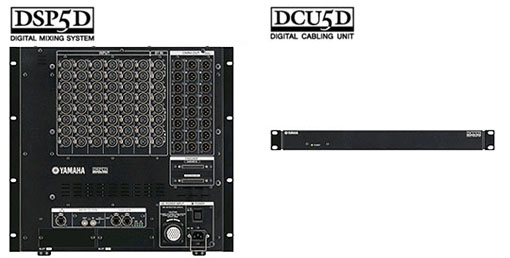The DSP5D provides essentially all the functionality of a PM5D-RH, minus the control surface, in a rack-mountable unit that can be seamlessly controlled from a PM5D (RH) console. In terms of I/O capacity and processing capability the DSP5D offers: 48 mono and 4 stereo inputs. 24 Mix buses, 8 Matrix buses. 24 Omni Outputs. Full channel functionality: gain, EQ and filters, dynamics, sends. 8 effect processors and 12 graphic equalizers. 2 Mini-YGDAI expansion card slots. Full compatibility with DSP5D Editor computer software. The ability to function as a remote stage box via the DCU5D Digital Cabling Unit. Up to two DSP5D units can be used with a single PM5D console. A PM5D plus one DSP5D gives you 4 input fader layers, with a total of 96 mono and 16 stereo input channels, while adding two DSP5D units to a PM5D provides 6 layers with 144 mono and 24 stereo input channels to comfortably handle large-scale applications. And of course your processing power is doubled or tripled, respectively. Like the PM5D itself, all analog inputs and outputs are directly accessible via standard XLR type connectors. After a few simple connections the DSP5D becomes an integral part of the PM5D console, and can be controlled from the PM5D control surface in the same way as the internal functions. So although you have significantly upgraded the system, you can simply plug in your sources and output devices and use it right away without having to work through another learning curve. DCU5D DIGITAL CABLING UNIT:-@ You can directly connect the DSP5D to a PM5D via standard cascade cables if they are to be used in relatively close proximity. But if you want to use the DSP5D as a powerful stage box the DCU5D Digital Cabling Unit lets you locate the DSP5D as far as 120 meters* from the PM5D console, connected only by one Cat-5 Ethernet cable (appropriate high-performance cable). The DCU5D converts the PM5D cascade signals (68-pin D-sub connector) to and from Cat-5 audio, dramatically reducing cabling requirements while maintaining solid audio and control reliability over extended distances.
